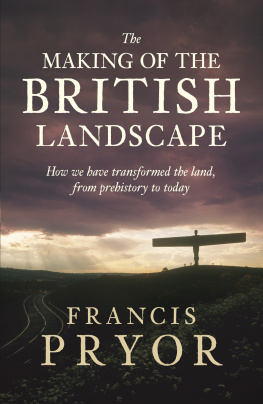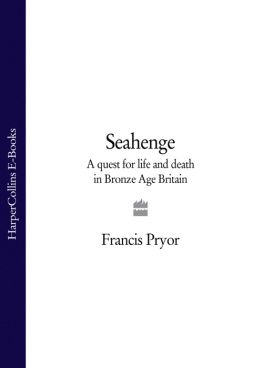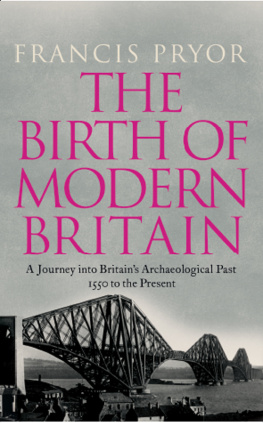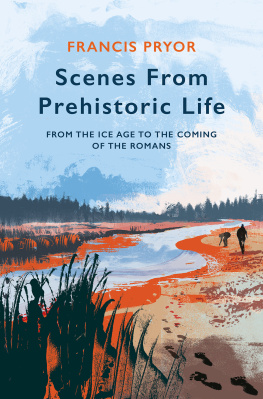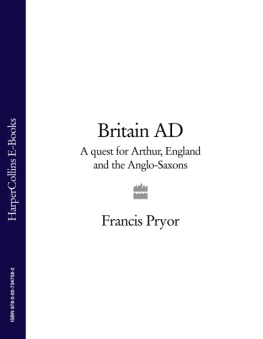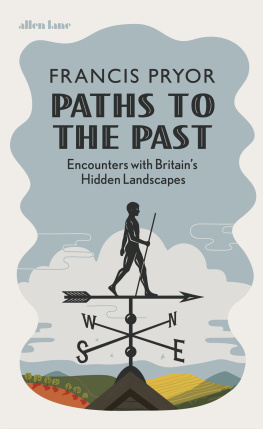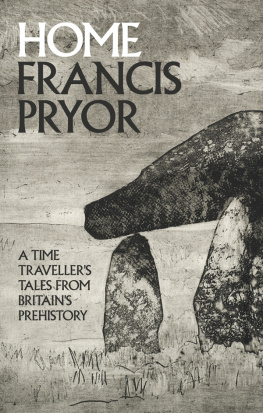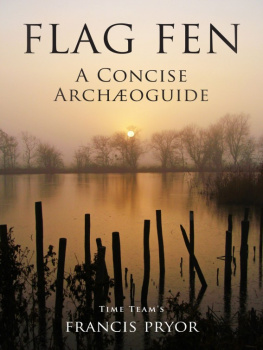FRANCIS PRYOR
The Making of the British
Landscape
How We Have Transformed the Land,
from Prehistory to Today

ALLEN LANE
an imprint of
PENGUIN BOOKS
ALLEN LANE
Published by the Penguin Group
Penguin Books Ltd, 80 Strand, London WC2R 0RL , England
Penguin Group (USA) Inc., 375 Hudson Street, New York, New York 10014, USA
Penguin Group (Canada), 90 Eglinton Avenue East, Suite 700, Toronto, Ontario, Canada M4P 2Y3
(a division of Pearson Penguin Canada Inc.)
Penguin Ireland, 25 St Stephens Green, Dublin 2, Ireland (a division of Penguin Books Ltd)
Penguin Group (Australia), 250 Camberwell Road, Camberwell, Victoria 3124, Australia
(a division of Pearson Australia Group Pty Ltd)
Penguin Books India Pvt Ltd, 11 Community Centre, Panchsheel Park, New Delhi 110 017, India
Penguin Group (NZ), 67 Apollo Drive, Rosedale, North Shore 0632, New Zealand
(a division of Pearson New Zealand Ltd)
Penguin Books (South Africa) (Pty) Ltd, 24 Sturdee Avenue, Rosebank, Johannesburg 2196, South Africa
Penguin Books Ltd, Registered Offices: 80 Strand, London WC2R 0RL , England
www.penguin.com
First published 2010
Copyright Francis Pryor, 2010
The moral right of the author has been asserted
All rights reserved
Without limiting the rights under copyright reserved above, no part of this publication may be reproduced, stored in or introduced into a retrieval system, or transmitted, in any form or by any means (electronic, mechanical, photocopying, recording or otherwise), without the prior written permission of both the copyright owner and the above publisher of this book
A CIP catalogue record for this book is available from the British Library
ISBN: 978-0-14-194336-7
For Maisie Taylor and Charles French with affection and gratitude
Acknowledgements
Dr Mike Nevell gave me numerous publications and references on his important work on the industrialization of Tameside and gently helped me understand some of its complexities; he has also kindly read the post-medieval chapter. Professor Mick Aston was a constant source of advice and encouragement and generously gave me free access to his enormous photographic archive; he also went through the manuscript and pointed out many inaccuracies and omissions. Mark Edmonds has also been kind enough to read through the manuscript and gave me photographs of Langdale in the Lake District. Marilyn Palmer and David Crossley were more than generous with their time and made special efforts to guide me through the fascinating maze that is industrial archaeology. David Cranstone has also shared his huge knowledge of matters industrial and Bill Bevan has helped me with advice on Sheffield and the uplands around it.
John Schofield at English Heritage conducted me around Second World War defences when we were filming The Real Dads Army for Channel 4. My brother Felix and sister Caroline have been very helpful on a number of specific occasions, Felix being particularly good when it came to John Clare and William Wordsworth. My brother-in-law Nigel Smith kindly read through a draft of the manuscript and made many constructive suggestions. Keeping it in the family, my niece Anra Simpson and her husband Pete helped me around Brighton and its charming Lanes. Neil Rhind provided me with information about Blackheath and Shooters Hill, south-east London, and my old friend Mark Lloyd-Price found me material on chalk streams. Dr Martin Bell (University of Reading) was his usual generous self: he helped me understand the modern and prehistoric Severn Levels and took me to some of the extraordinary sites he and his team have discovered.
Tim Taylor and several un-named directors were civilized enough to look the other way when occasionally I would steal away from the set of Time Team, with a camera concealed in my hat; Tim also gave me kind permission to use material from several Time Team shoots. Stewart Ainsworth made many useful comments, especially about landscapes in the Cheviot Hills.
Many of my photographic expeditions were made very much more pleasant when Maisie and I were able to arrange short holidays in Vivat Trust properties, some of which feature in this book (The Temple at Badger Dingle, Shropshire; Barns Tower, Peebles; and Church Brow Cottage, Kirkby Lonsdale, Cumbria).
Finally I would like to acknowledge my agent Bill Hamilton and the team at Penguin: my editors, Georgina Laycock and Michal Shavit, designers Lisa Simmonds and Alastair Richardson, editorial assistant and picture researcher Caroline Elliker, cartographer Alan Gilliland, production controller Rita Matos and editorial manager Richard Duguid. The large manuscript was ably copy-edited by Elizabeth Stratford. The index was compiled by Auriol Griffith-Jones.
It is usual to thank ones wife in the Acknowledgements; indeed, one day I would love to end this section with the words and special thanks to my dear wife Maisie, who has had to live with this book for a fortnight. In the event, it was rather longer than that and my thanks to her are heartfelt.
Preface
Many readers will be aware that the title of this book is a respectful nod in the direction of W. G. Hoskinss classic, The Making of the English Landscape, which was published in 1955. At that time scholars believed they knew rather more than was actually the case. In the middle of the twentieth century it was also still possible to paint a convincing picture with a broad brush. However, in the five subsequent decades research has revealed a great deal more, and as a consequence we now realize just how little we do in fact understand about the achievements of our ancestors. Broad brushstrokes are fine in their way, but there is a very great danger that they might paint out and obscure the real picture or pictures.
The pace and volume of recent research has provided so much high quality material that no two individuals would ever agree on what might now constitute a standard or balanced account of Britains landscape. For a few months I briefly chased after this ideal, but realized the task was impossible, and opted instead for a personal account of what I believe to be the main themes of an extraordinarily exciting story. This has meant that I have included places and topics that some might consider trivial and have inevitably omitted sites and events that others would regard as essential. I have taken as my guide for selection the wise advice of David Collison, the distinguished documentary film director who would often say to me: Very good, Francis, but does it advance our story? Nine times out of ten my bright ideas failed that simple test. So although I have made huge efforts to be factually correct, I am aware that this is certainly no textbook and should never be treated as such.
The British Isles are remarkable for the variety and richness of their landscapes. This was brought home to me when I lived and worked in Toronto in the 1970s. There, if you wanted to sample mountain scenery you had to drive for five days before you reached the foothills of the Rockies. The Prairies were vast beyond imagining and the huge areas of birch tree scrub and open country that comprised the sub-arctic Canadian Shield were indeed starkly beautiful, but interminable. The Great Lakes were, if anything, too great. You could have dropped the entire English Lake District into Lake Superior and still have room to sail a navy.
I suppose it boils down to a simple question of scale: the British landscape is human-sized. Like the motto of Englands smallest county, Rutland, there is

